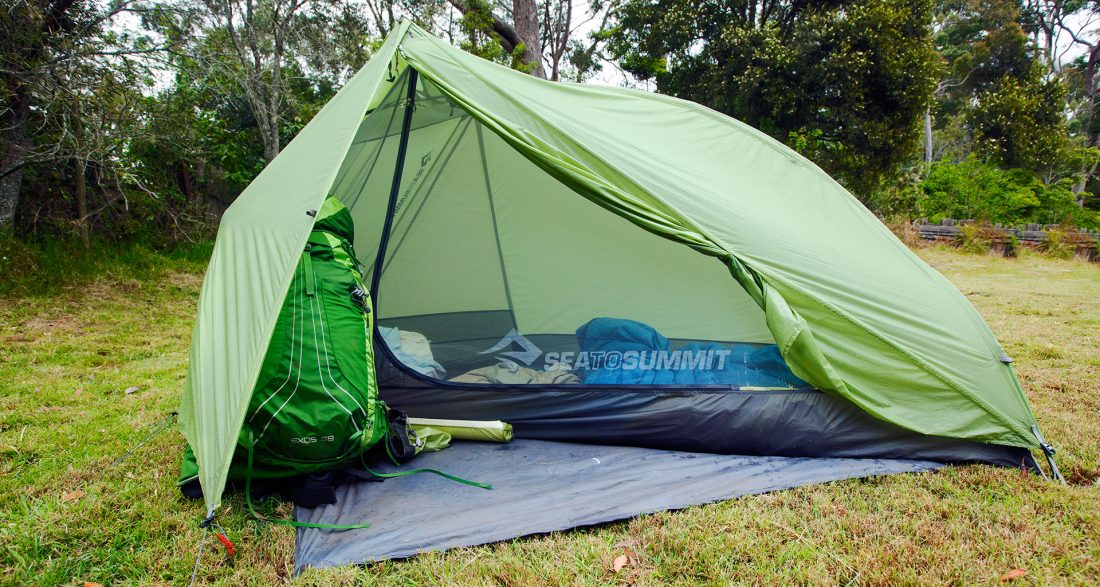
GEAR REVIEW
Sea To Summit
Alt0 TR1 Tent
This revolutionary ultralightweight tent series changes everything.
(This story originally featured in Wild #182, Summer 2021)
By James McCormack
In my past life, prior to becoming editor of Wild, I was a pro adventure photographer. It was a great gig. Except when it came to the weight of my overnight pack. My camera gear alone usually started at 7kg, and went up from there. Throw in a week’s worth of food, plus all kinds of random camp thingymajiggies, and the packs I carried were preposterously heavy. Trying to reduce the load, I often looked to my shelter; few pieces of kit weigh more. I tried bivvy bags as a solution. But if it rained, I wanted a tarp anyway, and weight-wise—if you marry a tarp and a bivvy bag—you’re not far off carrying a tent.
As a result, I’ve been a big believer in often heading out—especially when I’m bikepacking; on a bike, light is right—with nothing more than a lightweight STS Escapist tarp weighing merely 400g. But on a recent trip in Kosciuszko NP (see this issue’s Ride Notes), one evening the mercury dropped to -7°C. It struck home that if the weather that night turned really foul and windy, not being able to entirely seal off the elements was far from ideal.
In short, every ultralightweight shelter system I’ve encountered has meant less-than-ideal compromises. Until recently. That’s when I got my hands on Sea to Summit’s Alto TR1. New for 2021, the modular, semi-freestanding Alto series and the related Telos series—freestanding but weighing a little more—are, in short, gamechangers.
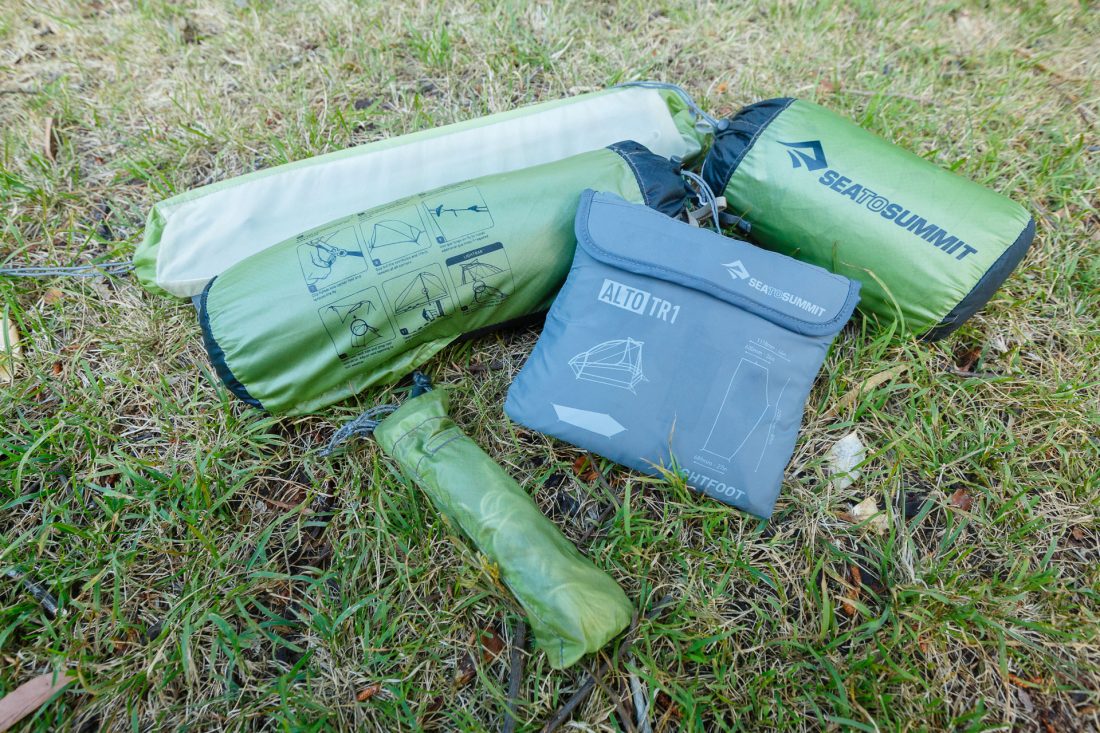
The Alto comes in one or two-person flavours. Featherlight DAC aluminium poles support a 15D siliconized nylon fly and floor, both with waterheads of 1,200mm. And if you want a 20D, 2,500mm waterhead floor plus a full-fabric inner, look to the Alto Plus models (although there’s a slight weight penalty). Anyway, with me being a weight weenie, I wanted to go as light as possible, hence the standard TR1. Being modular, it has multiple setup options, so let’s cut to the chase: How light could I go? Light as a floating feather, that’s how light. Set up as a fly only, with poles and pegs but without stuff sacks or bags, I measured its weight as 699g. Wow! There are heavier bivvy bags out there.
Of course, not everyone wants, nor every trip needs, such a bare-bones set up. You can add a footprint, either the Lightfoot (169g), which covers three-quarters of the tent’s floor space, or the Bigfoot (215g), which covers it entirely. And non-weight weenies will want the tent inner, which I weighed at 353g. Still, the tent fly, inner, poles and pegs come to just 1052g. That, my friends, is impressive.
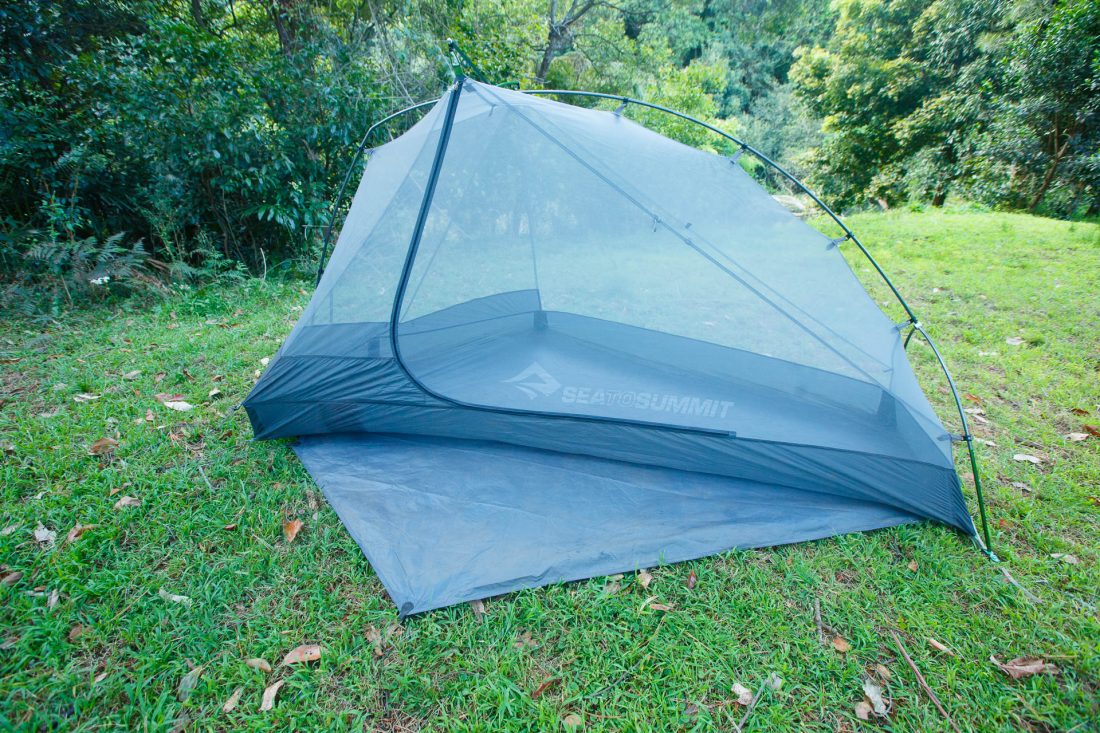
It’s not merely its weight that’s noteworthy; so, too, is its design. Here’s the thing: I was a tad wary of testing the TR1 as opposed to the TR2; I’ve been burnt in the past using one-person tents which proved to be cramped like coffins. But I needn’t have worried. The TR1 had an almost unbelievable weight-to-space ratio, with plenty of room to sit up and move around in. (For reference, I measured the inner height at 98cm.) In fact, some people who’d prefer even more gram shaving might argue it’s almost too spacious for a 1P tent. Much of that space comes down to what STS calls its ‘Tension Ridge Architecture’, the centrepiece of which is an inverted-angle brow pole (think of a shallow V). It allows steep inner walls, making nearly the entire floor space usable.
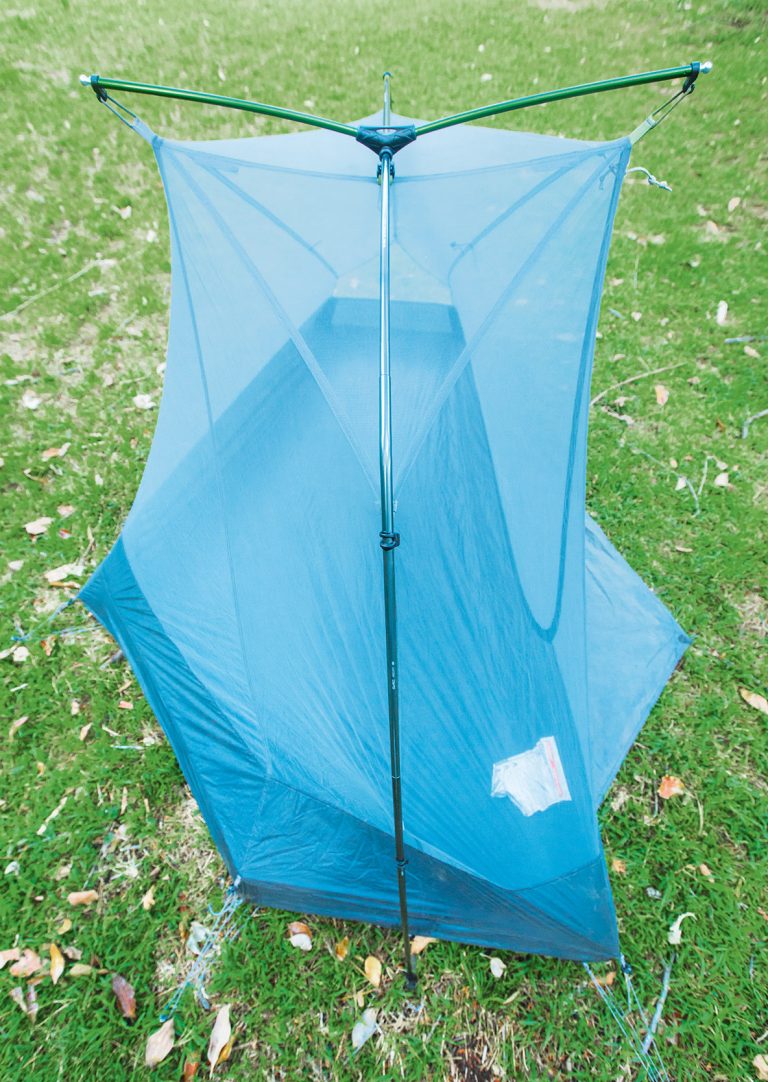
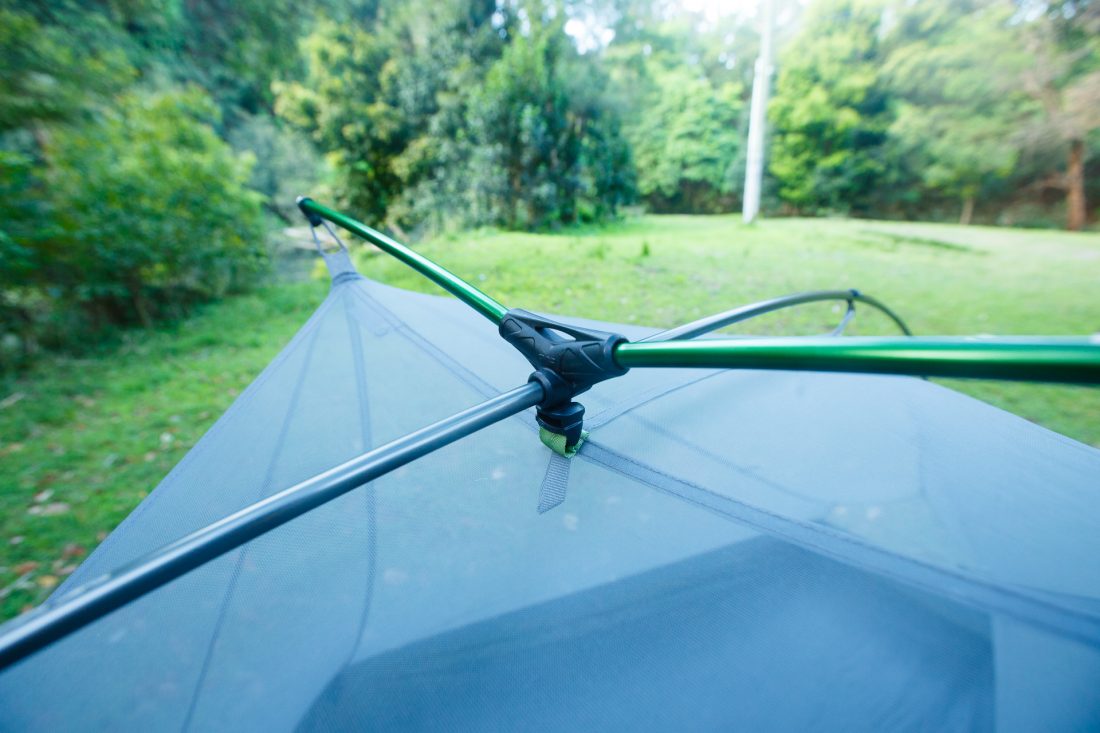
A few more points: The tent has two vents; together they provided good cross ventilation. Even in a storm, I found the upper vent to be set back enough that rain never entered. One thing, though: Rainwater did collect on top of the tent in a pool between the cross strut and the vent. But since it never leaked, I don’t know if this is a negative or not. In any case, I just let the water sit. It never proved a problem.
Ease of tent setup was neither quick nor slow, but probably mid-range. That said, it certainly wasn’t overly complex. I put my 8yo son to work setting up the tent on one occasion; he probably managed to get it 98% set up without the slightest assistance.
The tent also comes with an unusual pole bag, which includes a small piece of curved, translucent plastic—a Lightbar, STS calls it. I expected this to be a gimmick; instead I found it surprisingly useful. Put your headlamp in it at night, and instead of an overly focussed beam, light is diffused to illuminate the entire tent.
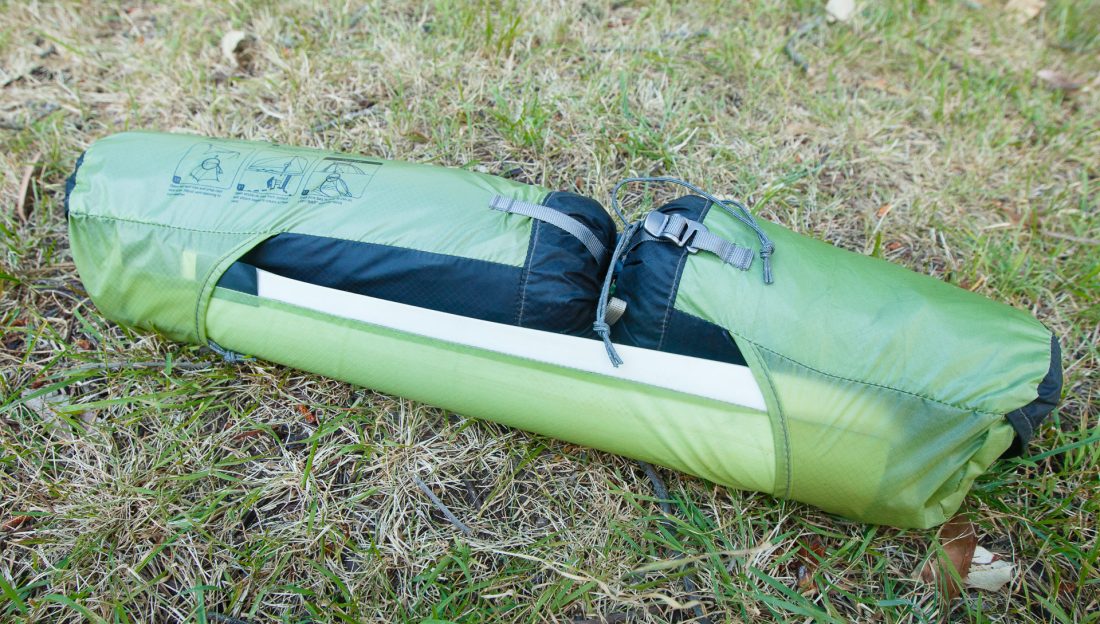
As for the two footprints (which aren’t included), my preference is for the Lightfoot. Not only do you save grams, but once it’s raining, if you open the vestibule, water drips down from the zip; with the Bigfoot, that water hits the impermeable surface and spreads everywhere. But with the smaller Lightfoot, which doesn’t stretch to the vestibule’s zippered edge, that water simply sinks into the ground.
So, what’s my overall impression of the Alto TR1? Seriously, I’m impressed. It’s been a long time since I’ve been so excited by a tent. The only downside, really, was that my tent was just a loaner; I had to send it back to Sea to Summit. Now I just have to get my hands on one for myself.
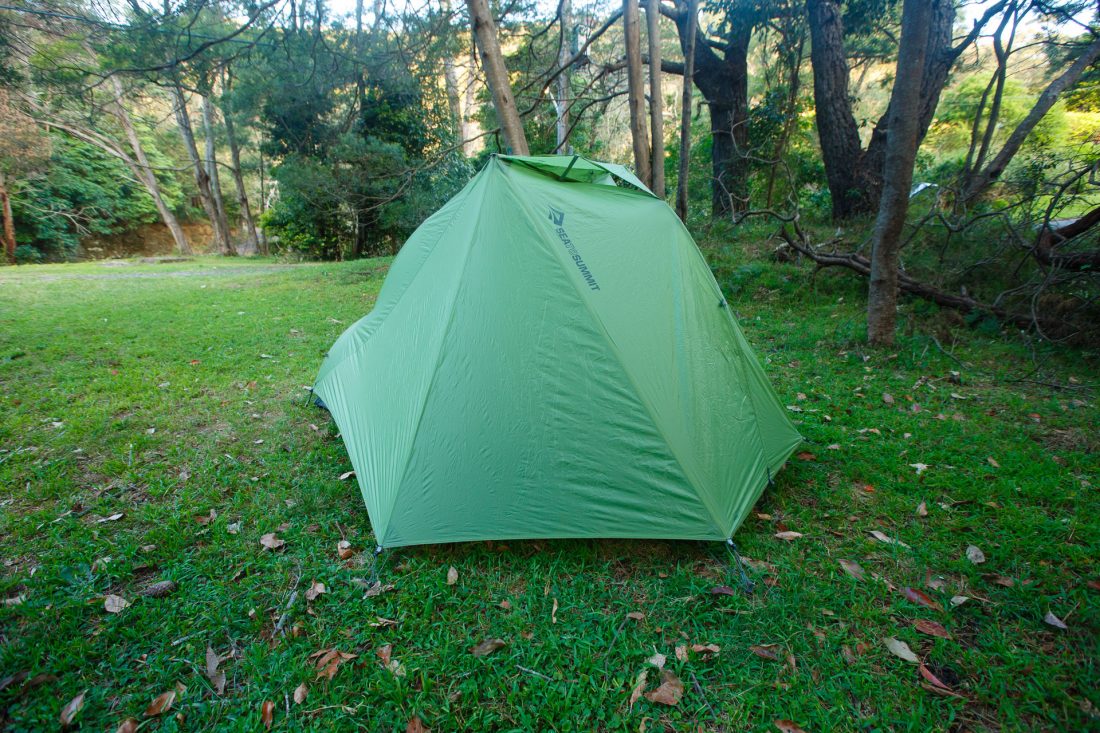
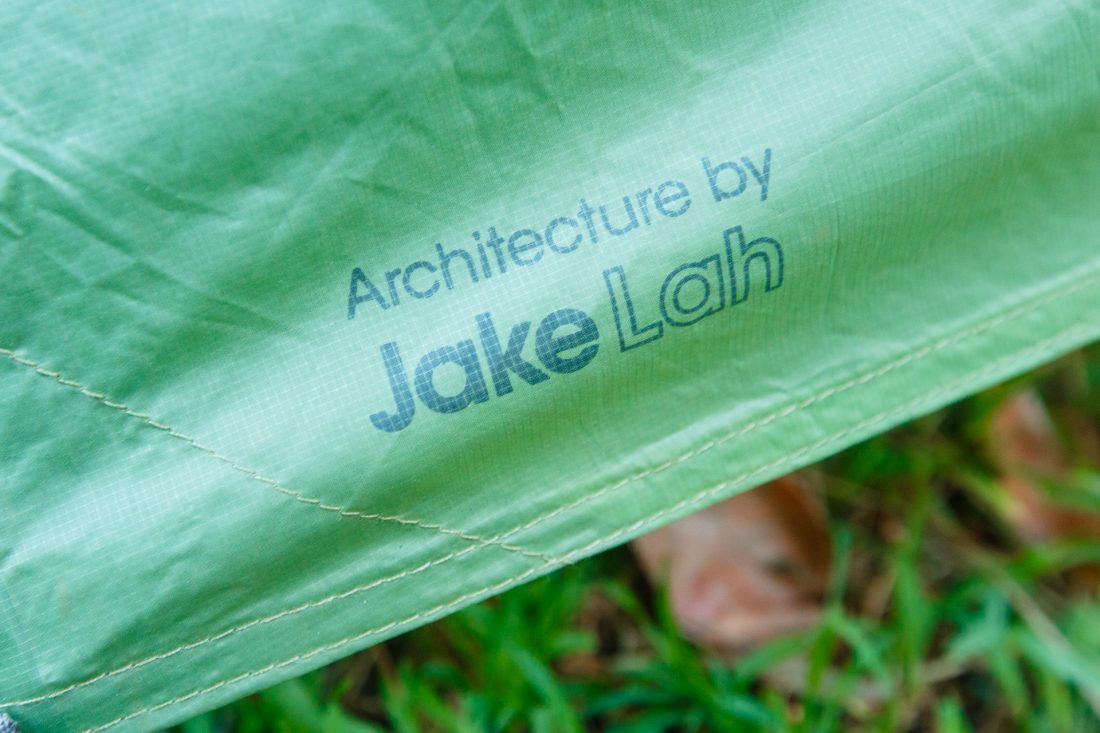
NEED TO KNOW
Product Class:
One-person semi-freestanding tent
Volume:
45L, expandable to 55L
WEIGHT (AS TESTED):
Tent Fly: 358g
Tent inner: 353g
Poles: 273g
Pegs: 68g
Footprint (Lightfoot): 169g
Footprint (Bigfoot): 215g
AREA:
Floor: 1.81m2
Vestibule: 0.7m2
WATERHEAD:
Fly: 1,200mm
Floor: 1,200mm
INTERIOR HEIGHT (AS TESTED):
98cm
RRP:
$719.99

